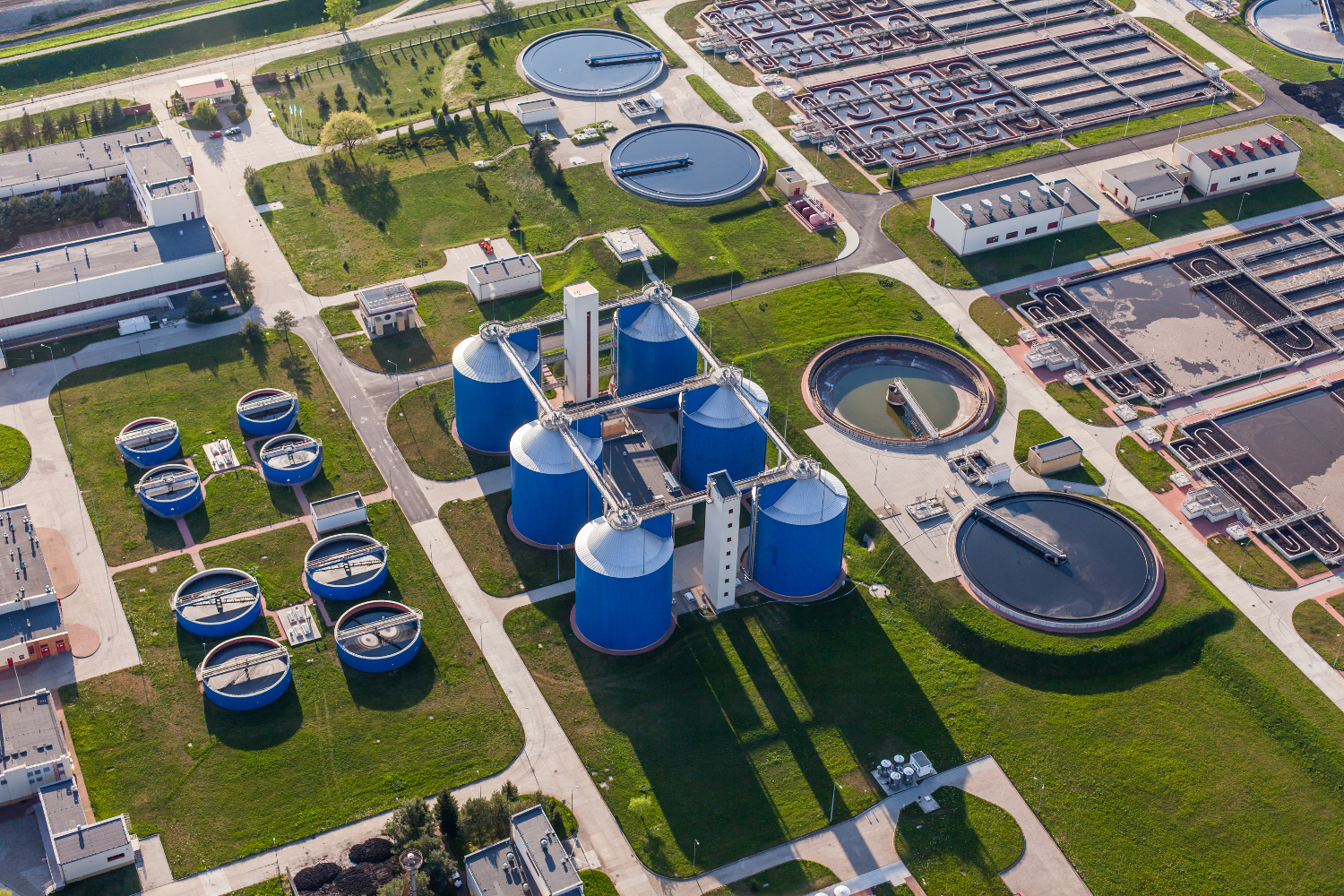Disk filters are a really compact solution for removal of suspended solids and correlated COD, BOD5 and phosphorus.
System operation
The filter is installed inside a stainless steel or a concrete tank and it is completely submerged in order to use the entire filtering surface.
The filter is composed of a central hollow shaft that supports vertically mounted disks. A particular filtering fabric is fixed on each side of the disks.
The water containing suspended particles flows by gravity through the filtering elements from outside to inside. Solid particles are retained on the fabrics and filtered water goes into the hollow shaft getting out of the filter by gravity. During this normal operation there are no parts in movement and no energy consumption.
Due to the progressive clogging of the filtering elements, the water level at the inlet of the filter increases up to a maximum level. The level probe starts automatically the cleaning cycle that consists in a washing procedure and, periodically, in a back-washing procedure too. The cleaning rotating device is composed of a header on which are fixed a series of fissured tubes that rotate parallel to the disks. The suspended solids, retained on the filtering elements, are sucked through the fissured tubes by a pump and conveyed to the treatment plant. The washing procedure stops after a cycle and it starts again when maximum level is reached.
Equipment description
One static disk filter is composed of:
- an hollow shaft that supports vertically mounted disks
- a series of disks made up of a stainless steel framework on which is fixed a special filtering fabric, without use of any adhesives.
The fabric is fixed on the two sides of the disk and each disk is divided into four portions.
- a special filtering fabric in polyester similar to a pile fabric.
- a cleaning cycle that consists in:
- a washing procedure that works when a maximum level of the inlet water is reached
- a back-washing procedure that works periodically
- a cleaning rotating device composed of a header on which are fixed a series of fissured tubes submerged electrical pumps
- a motor reducer to rotate the cleaning device through a chain driven system;
- level sensor
- control panel
- stainless steel tank (optional).
Technical characteristics
- Maximum flow rate : up to 1000 m³/h
- Filtration degree : comparable to 5 micron
- Inlet Suspended Solids : < 100 mg/l
- Outlet Suspended Solids : 8 5 – 10 mg/l, depending on inlet Suspended Solids.
- Maximum head loss : 300 mm.
- Amount of backwashing water : < 3 % of the filtered water
- Construction : AISI 304/316 stainless steel
- Installation : the filter is installed inside an AISI 304/316 stainless steel tank (version I) or inside a concrete tank (Version IC).
- Installation of more filters in parallel is also possible.
Advantages of the cleaning cycle (washing + backwashing)
- better cleaning of the filtering fabrics
- lower number of washing procedures
- lower consumption of washing water
- longer life of the filtering fabrics.
Characteristics:
- Disks never move and cleaning device rotates only during the cleaning cycle. This system is patented and allows to:
- prevent decantation or floatation of suspended solids
- avoid use of hydraulic sealings and infiltration of not filtered water through the outlet
- The filtering fabric has a thickness that allows a deep filtration: a bigger quantity of suspended solids is retained on it compared with the filtering cloth
- The filtering fabric is fixed on the stainless steel framework without use of any adhesives.
- It is possible to replace only the filtering cloth.
- The filter works completely submerged in order to use the entire filtering surface.
- No bacterial aerosol production thanks to the submerged cleaning system
- No noise thanks to the submerged cleaning system
- No algae and smell production thanks to the possibility to cover the tank.
- The cleaning system uses fissured tubes and not high-pressure nozzles that can get clogged and reduce the cleaning efficiency.
- The back-washing procedure starts periodically depending on the quantity of inlet suspended solids. The combination of washing and back-washing allows a deep and effective cleaning of the filtering fabrics.


